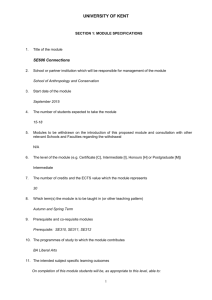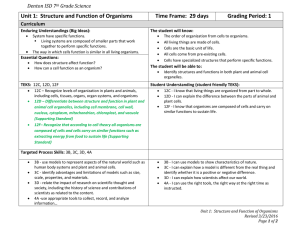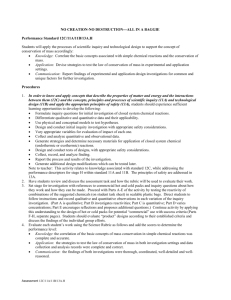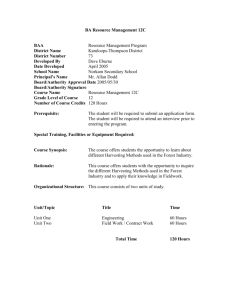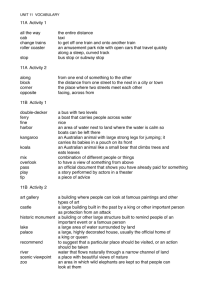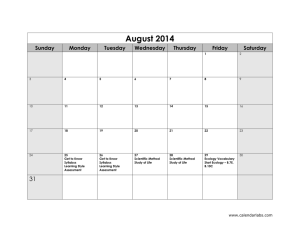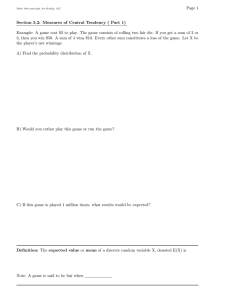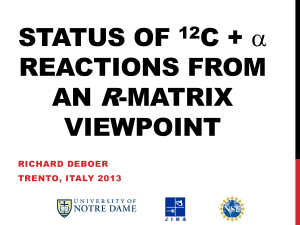CURRICULUM PROFILE 8TH GR. PHYSICAL SCIENCE & EARTH SCIENCE
advertisement
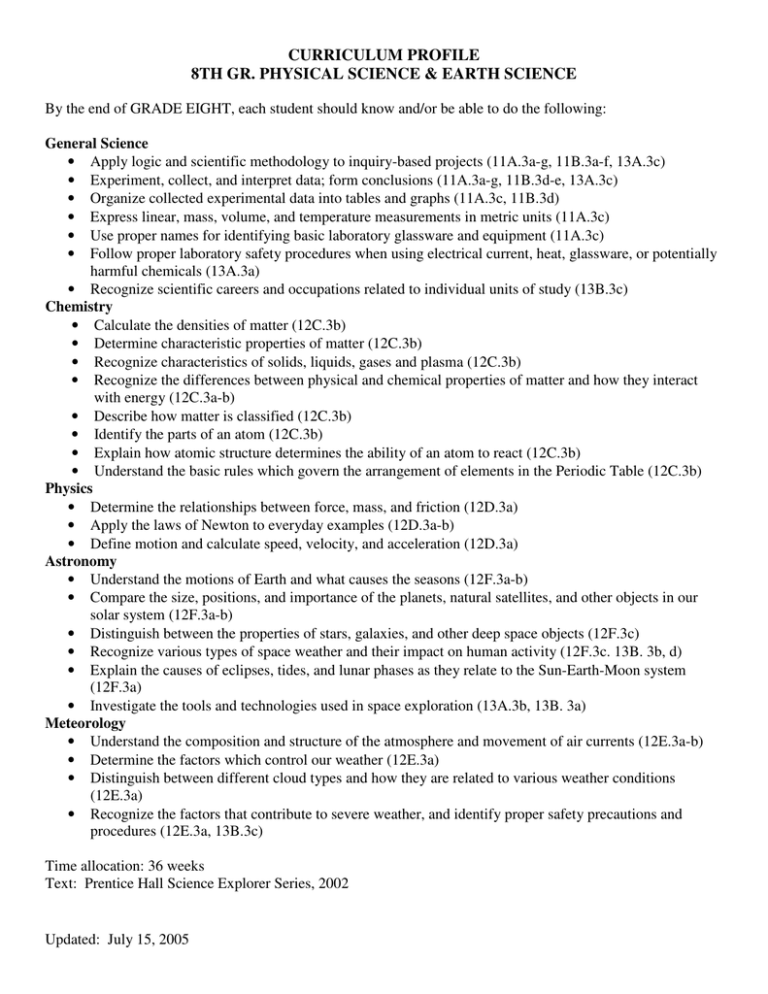
CURRICULUM PROFILE 8TH GR. PHYSICAL SCIENCE & EARTH SCIENCE By the end of GRADE EIGHT, each student should know and/or be able to do the following: General Science • Apply logic and scientific methodology to inquiry-based projects (11A.3a-g, 11B.3a-f, 13A.3c) • Experiment, collect, and interpret data; form conclusions (11A.3a-g, 11B.3d-e, 13A.3c) • Organize collected experimental data into tables and graphs (11A.3c, 11B.3d) • Express linear, mass, volume, and temperature measurements in metric units (11A.3c) • Use proper names for identifying basic laboratory glassware and equipment (11A.3c) • Follow proper laboratory safety procedures when using electrical current, heat, glassware, or potentially harmful chemicals (13A.3a) • Recognize scientific careers and occupations related to individual units of study (13B.3c) Chemistry • Calculate the densities of matter (12C.3b) • Determine characteristic properties of matter (12C.3b) • Recognize characteristics of solids, liquids, gases and plasma (12C.3b) • Recognize the differences between physical and chemical properties of matter and how they interact with energy (12C.3a-b) • Describe how matter is classified (12C.3b) • Identify the parts of an atom (12C.3b) • Explain how atomic structure determines the ability of an atom to react (12C.3b) • Understand the basic rules which govern the arrangement of elements in the Periodic Table (12C.3b) Physics • Determine the relationships between force, mass, and friction (12D.3a) • Apply the laws of Newton to everyday examples (12D.3a-b) • Define motion and calculate speed, velocity, and acceleration (12D.3a) Astronomy • Understand the motions of Earth and what causes the seasons (12F.3a-b) • Compare the size, positions, and importance of the planets, natural satellites, and other objects in our solar system (12F.3a-b) • Distinguish between the properties of stars, galaxies, and other deep space objects (12F.3c) • Recognize various types of space weather and their impact on human activity (12F.3c. 13B. 3b, d) • Explain the causes of eclipses, tides, and lunar phases as they relate to the Sun-Earth-Moon system (12F.3a) • Investigate the tools and technologies used in space exploration (13A.3b, 13B. 3a) Meteorology • Understand the composition and structure of the atmosphere and movement of air currents (12E.3a-b) • Determine the factors which control our weather (12E.3a) • Distinguish between different cloud types and how they are related to various weather conditions (12E.3a) • Recognize the factors that contribute to severe weather, and identify proper safety precautions and procedures (12E.3a, 13B.3c) Time allocation: 36 weeks Text: Prentice Hall Science Explorer Series, 2002 Updated: July 15, 2005
